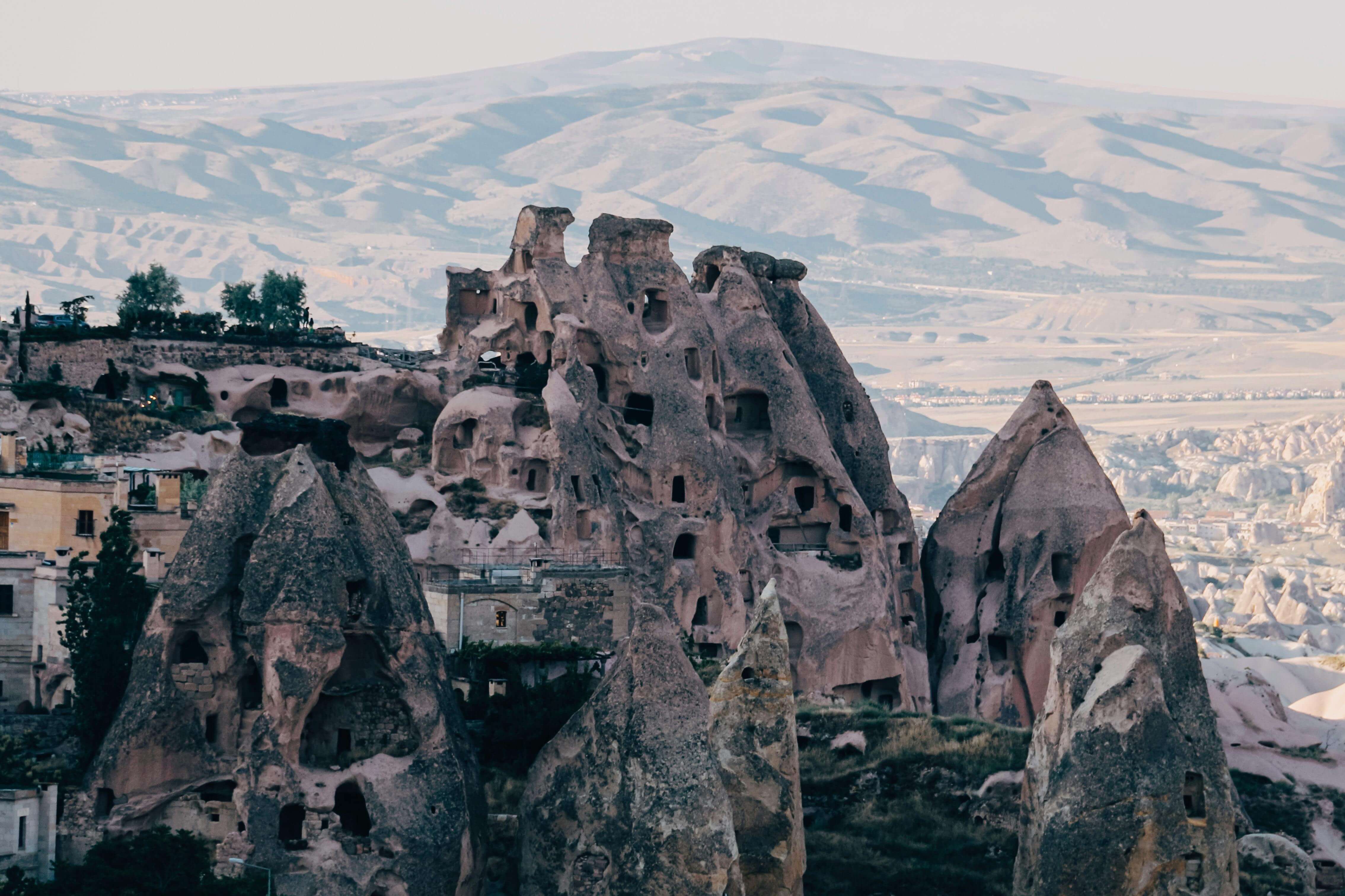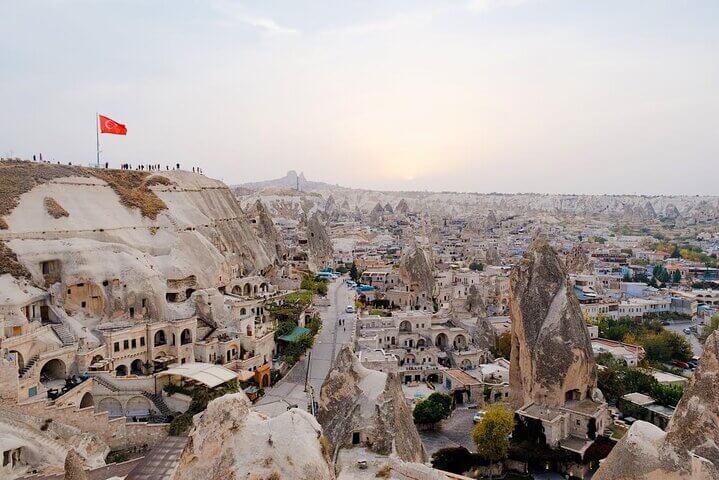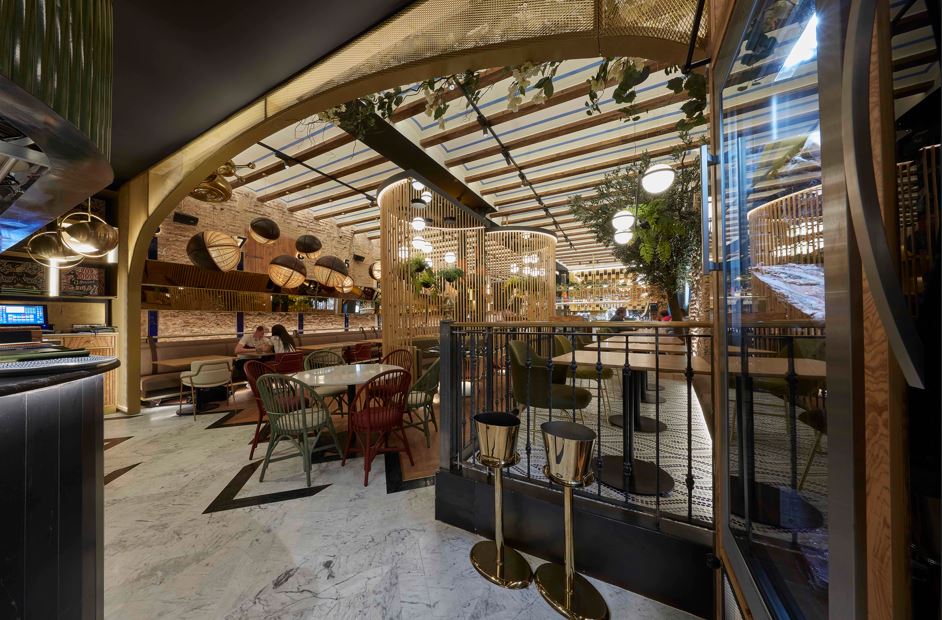Right in the middle of Turkey, the Cappadocia landscape looks like it has been taken from another world. The rocky formations, the valleys sculpted by erosion and the famous cave homes form a unique setting that combines the work of nature and human ingenuity. The cave homes are carved directly into the soft volcanic rock. However, they are much more than proof of ancient cultures’ ability to adapt. In fact, they are a model of sustainable architecture responding to the climate and social needs of their time. These constructions not only provided refuge but were also multifunctional spaces. They forged a deep connection with their setting, offering lessons in design that continue to reverberate today.
Limestone tuff
In Cappadocia, extreme weather conditions –scorching summers and frigid winters– demanded living solutions that far exceeded a simple roof. Fortunately, communities who settled in the region thousands of years ago discovered limestone tuff. This soft, porous volcanic rock had naturally insulating properties. Digging homes straight into this rock enabled them to take advantage of the rocks’ thermal capacities. In this way, they kept the homes cool in summer and warm in winter.
Digging instead of building also reduced the labour involved. This passive design, borne out of necessity, is still relevant in a world that seeks to build with a lower environmental impact and increased energy efficiency. Today, this philosophy of using natural resources and respecting the environment can be found in modern architecture projects that seek sustainability. One example is Compac, which has proven that innovation in materials (obsidian, quartz, terrazzo, etc.) can combine design, functionality and a respect for the environment.

The perfect assimilation of architecture and nature
The cave homes were not just energy-efficient refuges; they were designed to integrate fully into their setting. Dug into the slopes and cliffs, they were camouflaged in the landscape, becoming part of it. This approach was not just practical; it was also symbolic as it reflected a worldview in which human beings were not invaders, but partners with nature. The small openings used as windows were designed to allow in natural light and ventilation without compromising the thermal insulation. The interior areas, split over several levels, adapted to the needs of the inhabitants, with specific areas for sleeping, cooking and storing food. This simple-looking design is actually a sophisticated architectural solution that optimises resources and minimises the environmental impact.
There are parallels of this understanding of sustainability in contemporary design. For example, the company Compac has adopted a similar approach by creating materials that are not only beautiful and functional, but also long-lasting and environmentally friendly. A notable example is its involvement in the construction of the National Theatre of Denmark. In this building, quartz and technological marble surfaces contribute to a space that combines elegance and efficiency. This project demonstrates that, just like the cave homes, it is possible to attain a balance between functionality and aesthetics without sacrificing sustainability.
Spaces seeped with spiritual significance
The Cappadocia cave homes were not just dwellings, but also hubs for community and spiritual life. Many were used as churches and monasteries, especially during the Byzantine era, when Christians used them to flee from persecution. Inside, you can still find frescos that narrate religious scenes, witnesses of the role that these spaces played in the spiritual life of their inhabitants. The multifunctional use of these caves, which combined practical life with symbolism, is an example of how architecture can reflect not just the physical needs, but also the cultural and spiritual aspirations of a community.

Their materials are designed to resist the passage of time and create spaces that inspire and connect people. A notable example of this multifunctional use is Compac’s involvement in high-transit projects, such as international airports. In these projects, the durability and functionality of the surfaces are combined with a design that elevates user experience. This commitment to creating spaces both functional and emotionally significant reflects the same sensitivity as the Cappadocia cave homes.
Lessons in sustainability for the present
In a world where sustainability has become a global priority, the Cappadocia cave homes offer an invaluable lesson: the most architecturally effective solutions are often the simplest and most profoundly connected to their setting. These homes were designed to minimise the use of resources and maximise energy efficiency. As a passive building model, they continue to inspire architects and designers all over the world.
Today, this approach is reflected in projects that seek to reduce environmental impact with recycled materials and cleaner construction processes. For instance, Compac has managed to incorporate sustainable practices into the creation of high-quality surfaces. By using recycled materials in their products and reducing waste during production, they have demonstrated that innovation can go hand in hand with a respect for the environment. This approach is practical and responds to consumers’ growing demands for products that are both responsible and long-lasting.
A heritage that evolves
Many of the cave homes in Cappadocia are still inhabited. Meanwhile, others have been converted into boutique hotels, restaurants and museums that attract visitors from all over the world. These adaptations preserve the architectural heritage and demonstrate how an ancient design can evolve to meet modern-day needs. However, this transformation poses questions about the balance between preservation and tourism. And importantly, about how to maintain the authenticity of these spaces while opening them up to the world.
Similarly, innovations in materials and designs need to balance the demands of modern life with the preservation of the fundamental principles of sustainability and functionality. In this regard, Compac has become renowned for combining technology and tradition in its products. Its involvement in iconic projects, such as the Doha airport or prestigious private residences, shows how it is possible to create spaces that are both modern and profoundly connected to the essential values of durability, beauty and respect for the environment.

Inspiration for the future
The Cappadocia cave homes are much more than relics from the past. They are a reminder of how architecture can respond creatively and respectfully to natural conditions. Certainly, these homes combine simplicity and sophistication. And furthermore, they prove that the longest-lasting solutions are those that, rather than imposing themselves on nature, coexist within it. This legacy continues to inspire architects and designers who seek to create buildings that are more respectful and responsible.
Today, in a world facing unprecedented environmental challenges, Compac is gathering inspiration to develop materials that are not just functional and aesthetically pleasing, but also sustainable. From large-scale projects, such as public buildings, to private spaces, contemporary solutions prove it is possible to combine innovation, design and environmental responsibility. Just like the Cappadocia cave homes, these initiatives invite us to rethink our relationship with the environment. They inspire us to seek ways to inhabit it that are more harmonious and sustainable.
In conclusion, both the cave homes and the modern innovations of leading companies remind us that the true greatness of architecture does not reside only in its capacity to surprise us, but also in its ability to incorporate, inspire and last.

